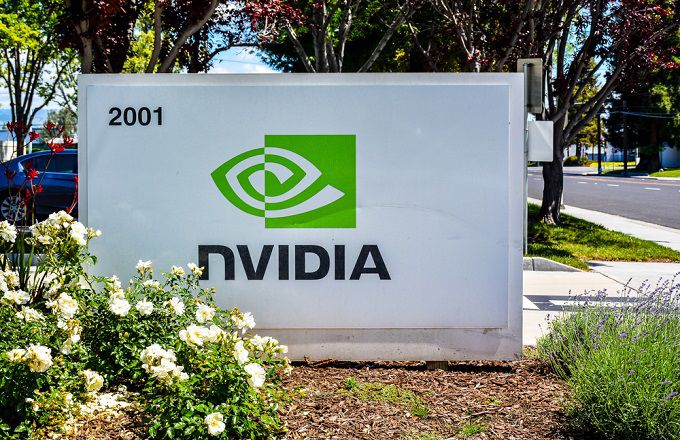NVIDIA Corporation (NVDA) is a world leader in graphics processing technologies and artificial intelligence. It has revolutionized the way we interact with electronic devices, from the gaming industry to autonomous vehicles and robotics. With their pioneering vision for the future, NVIDIA has become an industry leader in providing integrated solutions for the world’s most demanding computing challenges. This article will provide an in-depth review of the company, its products, services, and financial performance. From the latest advancements in GPU performance to the most innovative AI applications, this review will take a look at why NVIDIA is the go-to leader for the world’s most advanced computer solutions.
Overview of NVIDIA Corporation

NVIDIA Corporation (NVDA) is a technology company that designs graphics processing units (GPUs) for the gaming and professional markets, as well as system on a chip units (SoCs) for the mobile computing and automotive markets. Founded in 1993, NVIDIA is one of the best-known names in the industry, with a wide range of products used in laptops, desktops, and servers. The company’s GPUs are used by video game developers, creative professionals, and large enterprises. NVIDIA’s SoCs are used in mobile devices, self-driving cars, and robotics. The company is also a leader in artificial intelligence and machine learning, with a range of products designed to enable AI applications. NVIDIA is also investing heavily in cloud gaming, as well as cloud-based AI services. With its focus on innovation, NVIDIA is well-positioned to continue to be a leader in the tech industry.
Financial Performance of NVIDIA Corporation

NVIDIA Corporation (NVDA) is a worldwide leader in graphics processing technology and artificial intelligence development. The company’s products are used in a wide range of gaming, professional visualization, data center, and automotive markets. The company’s financial performance has been impressive over the last few years. Revenue has grown from $5.01 billion in 2016 to $11.73 billion in 2020. This growth can be attributed to the company’s success in the gaming, data center, and automotive markets. NVIDIA has seen strong demand for its products as its GPUs have become increasingly powerful and more efficient. The company’s gross margin has also increased from 55.5% in 2016 to 66.8% in 2020, showing the company’s success in controlling costs. The company’s net income has also grown significantly and has seen impressive growth over the last few years. In 2016, NVIDIA reported a net income of $1.38 billion, and this has increased to $3.17 billion in 2020. This strong financial performance is a testament to the company’s success in the gaming, data center, and automotive markets.
NVIDIA’s Innovative Products and Services
NVIDIA is a worldwide leader in innovative products and services, offering a wide range of graphics processing units (GPUs) and AI solutions. NVIDIA’s GPUs are used in a variety of applications, including gaming, computer-aided design, virtual reality, and cloud computing. NVIDIA’s AI solutions are designed to help businesses and organizations harness the power of AI to solve complex problems and improve efficiency. NVIDIA’s offerings include the Jetson platform and the Tesla line of AI-accelerated GPUs. NVIDIA’s products and services have revolutionized the way businesses process, analyze, and store data, enabling them to make better decisions faster. NVIDIA has also developed a range of powerful AI tools that can help businesses develop and deploy AI solutions quickly and easily. NVIDIA’s products and services are transforming the way businesses work and giving them the edge they need to stay competitive in today’s fast-paced world.
Potential Risks for Investors in NVIDIA Corporation

Potential risks for investors in NVIDIA Corporation should not be taken lightly as the stock market can be unpredictable. NVIDIA is a technology company that specializes in manufacturing graphics processing units (GPUs) for personal computers, as well as mobile computing devices and gaming consoles. As such, the company’s success is heavily dependent on the performance of the gaming and technology industry. If demand for gaming and technology products decreases, NVIDIA’s stock price could plummet. Additionally, the company faces competition from a variety of other technology companies, such as AMD, Intel and Qualcomm. If these companies release products that are more attractive to consumers than NVIDIA’s products, NVIDIA’s stock price could suffer. In addition, the company may be subject to legal or regulatory changes that could adversely affect its business. Finally, NVIDIA’s stock price could be adversely affected by changes in the political and economic environment, such as tariffs or trade wars. As such, investors should be aware of all of these potential risks before investing in NVIDIA Corporation.
Summary of NVIDIA Corporation’s Strengths and Weaknesses

NVIDIA Corporation (NVDA) is a leading manufacturer of computer graphics processing units (GPUs) and related technologies used in gaming, professional visualization, data center and automotive markets. The company is well-known for its innovative products and cutting-edge technology, which have made NVIDIA a leader in the GPU industry. NVIDIA’s main strength is its wide range of products and services, which have enabled them to become a market leader. The company has a strong presence in the gaming, professional visualization, data center, and automotive markets, providing GPUs, gaming platforms, and cloud-based services. Additionally, NVIDIA has a strong research and development team, which has enabled them to remain at the forefront of innovation. NVIDIA also has a strong financial position, with a healthy balance sheet and a consistent track record of profitability. However, NVIDIA is not without weaknesses. The company’s reliance on the gaming industry means that it is exposed to industry-wide slowdowns. Additionally, NVIDIA faces stiff competition from other GPU manufacturers, such as AMD. Additionally, the company’s products are priced at a premium, which may limit its appeal to budget-conscious consumers. Finally, NVIDIA’s reliance on the gaming industry could be a long-term threat




